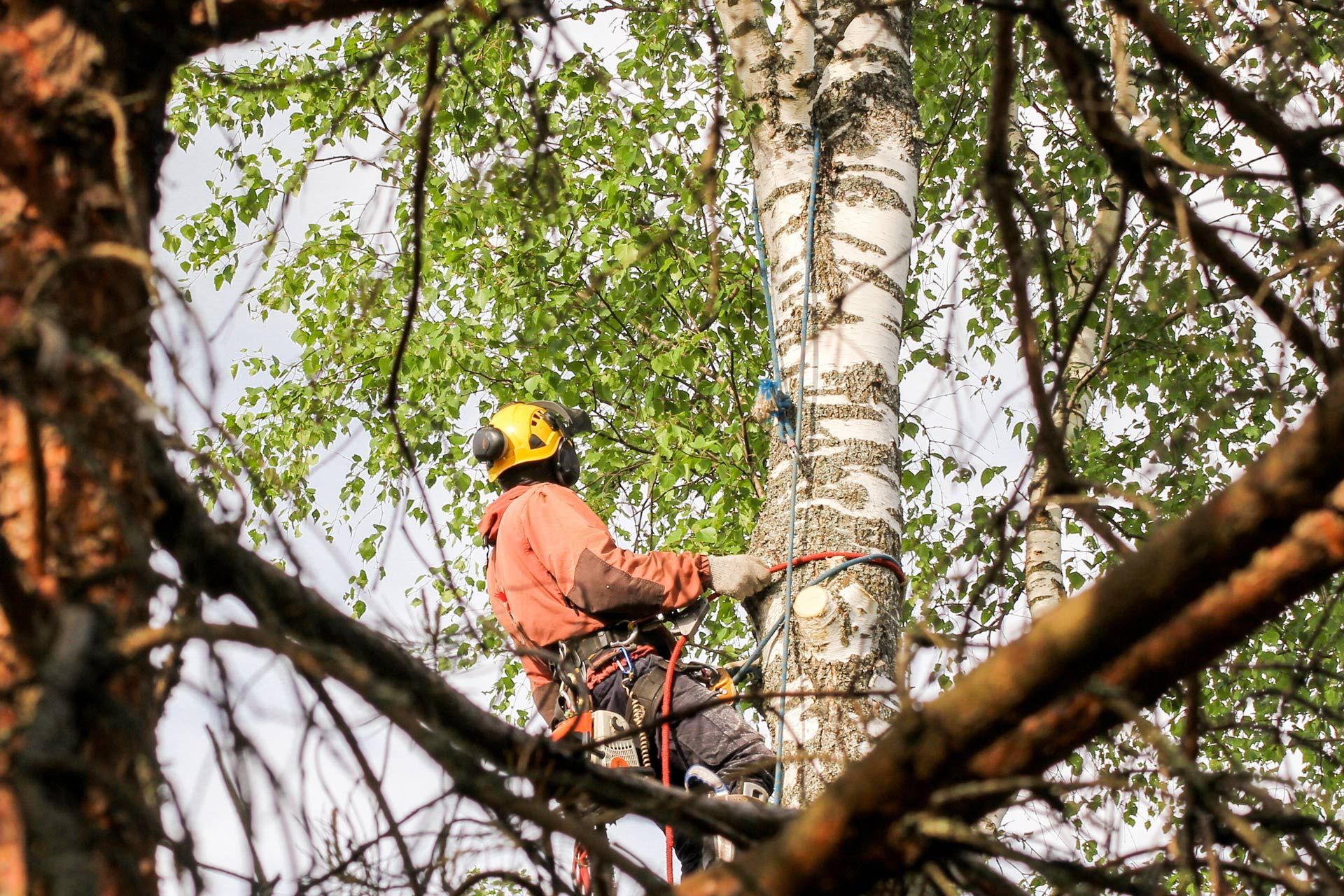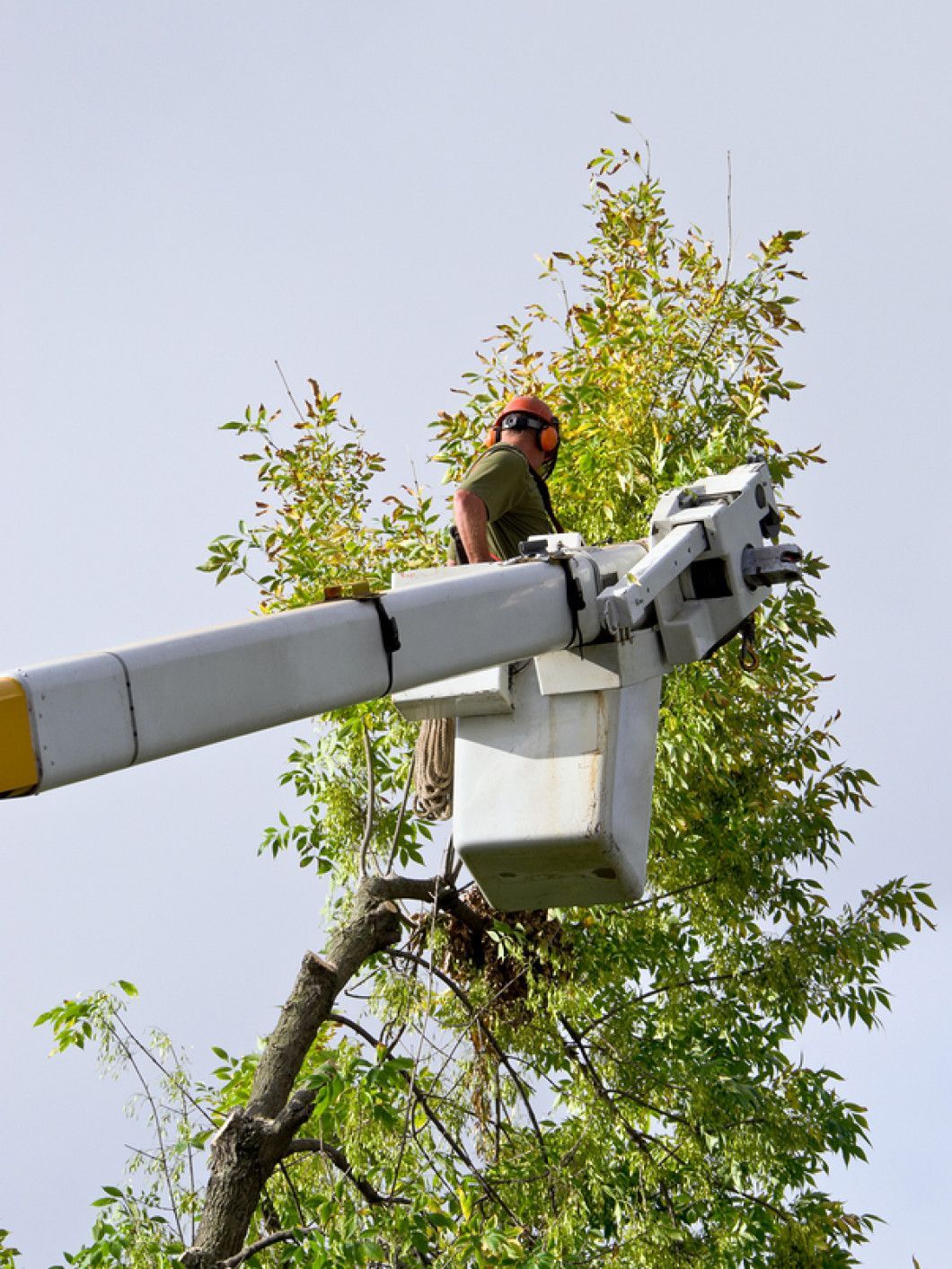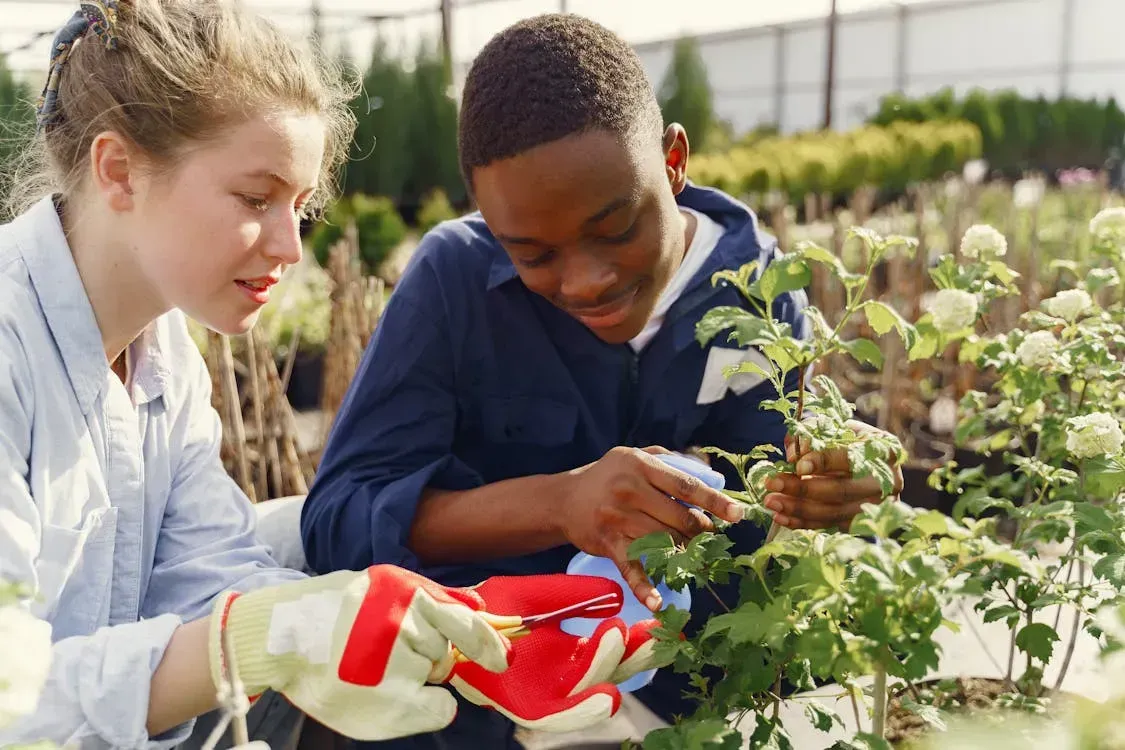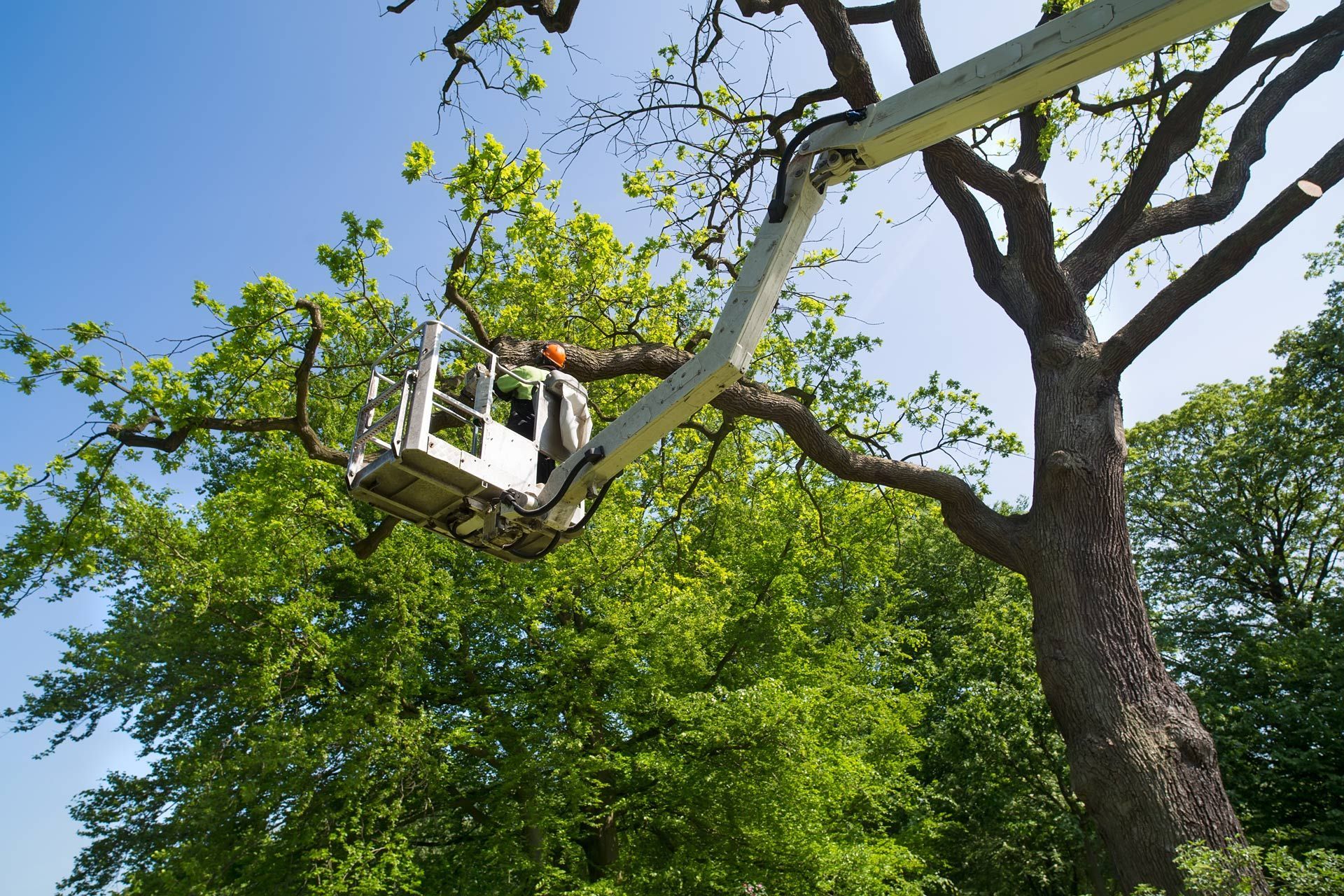June 17, 2024
When to Avoid Pruning Trees Pruning keeps trees healthy and looking good. But, knowing when not to prune is just as important. Pruning at the wrong time can harm your trees and stunt their growth. When should you not prune a tree? You should not prune during its active growth period, typically in late spring and early summer. During these periods, trees are focusing their energy on producing leaves and branches. Pruning at this time can cause undue stress and make them more susceptible to diseases and pests. Additionally, avoid pruning during extreme weather conditions, such as drought, extreme heat, or severe cold, as these can further stress the tree and hinder its ability to heal properly. What are the three general rules in pruning? Prune in Late Winter or Early Spring: The best time to prune most trees is during late winter or early spring, before new growth starts. This allows the tree to heal quickly and encourages healthy growth in the coming season. Never Remove More Than 25% of the Tree's Foliage at Once: Removing too much foliage at once can stress the tree and reduce its ability to photosynthesize, which is essential for its health and growth. Avoid Pruning During Active Growth Periods: Pruning during active growth periods, such as late spring and early summer, can stress the tree and make it more susceptible to diseases and pests. It's important to prune when the tree is dormant or less active to minimize stress and promote healthy recovery. What is the 1/3 rule? The 1/3 rule is a guideline to ensure you don't remove too much of the tree's foliage at once. According to this rule, you should never remove more than one-third of the tree’s total branches or foliage during a single pruning session. Removing too much at once can stress the tree, reduce its ability to photosynthesize, and ultimately harm its health. By following the 1/3 rule, you help maintain the tree's structural integrity and promote healthy growth. What is the May rule for pruning? The May rule suggests avoiding pruning during the month of May. This is because, in many regions, May is a peak growth period for trees. Pruning during this time can interfere with the tree's natural growth cycle, cause stress, and increase the risk of disease and pest infestation. By waiting until after this active growth period, you allow the tree to use its energy for healthy development and recovery. What part of a tree should not be cut? Certain parts of a tree should generally not be cut to avoid harming its health and structure. These include: The Main Trunk: Cutting into the main trunk can compromise the tree's stability and health. Only trim the trunk if absolutely necessary and always consult a professional for such significant cuts. Large Structural Branches: Avoid cutting large branches that support the tree's structure. Removing these can destabilize the tree and create large wounds that are difficult for the tree to heal. Root System: Cutting into the roots can severely impact a tree's ability to absorb water and nutrients. Avoid any root cutting unless absolutely necessary and under professional guidance. Branches with Insect Infestations or Disease: While it may seem counterintuitive, cutting diseased or infested branches requires careful consideration to avoid spreading the problem. Always consult a professional arborist in these cases. What happens to a tree if you don’t prune it? If a tree is not pruned, several issues can arise: Overgrowth: Without regular pruning, trees can become overgrown. This can lead to weak and crowded branches that compete for light and nutrients. It's advisable to prune trees every winter to early spring. Weak Branches: Over time, unpruned trees may develop weak, crossing branches that are prone to breaking. This can pose a safety hazard, especially in storms or high winds. Poor Air Circulation: Dense foliage can prevent proper air circulation, increasing the risk of fungal diseases and pest infestations. Reduced Fruit or Flower Production: For fruit-bearing or flowering trees, lack of pruning can result in reduced yield and quality of fruits or flowers. Aesthetic Issues: Unpruned trees can look untidy and may not fit well within a landscaped area. Regular pruning helps maintain a tree's shape and appearance. By not pruning, trees can develop structural problems, become more susceptible to diseases, and may not grow as healthily as they would with proper care. But remember not to prune them too early. Can you prune a tree wrong? Yes, it's possible to prune a tree incorrectly, and doing so can cause significant harm. Common mistakes include: Over-Pruning: Removing too much foliage at once can stress the tree, reduce its ability to photosynthesize, and impair its overall health. Following the 1/3 rule helps prevent this issue. Improper Cutting Techniques: Making cuts in the wrong place or at the wrong angle can damage the tree. For example, cutting too close to the trunk can remove the branch collar, which is vital for healing. Conversely, leaving too much of a stub can lead to decay. Pruning at the Wrong Time: Pruning during active growth periods, extreme weather conditions, or the wrong season can stress the tree and increase vulnerability to pests and diseases. Using Dirty or Dull Tools: Pruning with unclean or blunt tools can introduce diseases and create jagged cuts that are harder for the tree to heal. Neglecting Safety: Not using proper safety gear or techniques can lead to personal injury or damage to the tree. Always ensure you have the right equipment and knowledge before pruning. Incorrect pruning can lead to poor growth patterns, increased disease susceptibility, and long-term damage to the tree. Proper technique and timing are crucial to maintain tree health and structure. What month is best to prune trees? Regarded as the best time to prune most trees is in late winter to early spring, just before new growth starts. This timing allows the tree to heal quickly and encourages robust growth during the growing season. Pruning during this period minimizes stress on the tree and reduces the risk of disease and pest infestations. What is the difference between tree trimming and pruning Tree trimming and pruning are often used interchangeably, but they serve different purposes: Tree Trimming: This is primarily done for aesthetic purposes. It involves cutting back overgrown branches to maintain a desired shape and appearance. Trimming helps keep trees looking neat and prevents them from becoming too dense. Tree Pruning: Pruning is focused on the health and safety of the tree. It involves removing dead, diseased, or damaged branches to promote healthy growth. Pruning can also include thinning out branches to improve air circulation and reduce the risk of disease. Understanding the difference helps ensure that each task is performed with the right goal in mind, whether it's maintaining the tree's appearance or promoting its health. How to prune a tree without killing it To prune a tree without harming it, follow these steps: Use Clean, Sharp Tools: Always use sharp pruning tools to make clean cuts. Clean tools prevent the spread of diseases between trees. Make Proper Cuts: Cut branches just outside the branch collar (the swollen area where the branch joins the trunk) to allow for proper healing. Avoid leaving stubs or making flush cuts. Follow the 1/3 Rule: Do not remove more than one-third of the tree's foliage in a single session. This helps maintain the tree's ability to photosynthesize and stay healthy. Prune at the Right Time: Late winter or early spring is generally the best time to prune. Avoid pruning during the tree's active growth periods or extreme weather conditions. Remove Dead or Diseased Wood First: Focus on removing any dead, damaged, or diseased branches first. This promotes the overall health of the tree and prevents the spread of disease. Thin Out Crowded Areas: Thin out branches that are crowded or crossing to improve air circulation and light penetration. This helps prevent disease and promotes healthy growth. Is it better to prune in fall or spring It is generally better to prune in early spring and late winter. Pruning during these times allows the tree to heal quickly and prepares it for strong growth during the upcoming growing season. Pruning in fall is not usually recommended because it can stimulate new growth that might not harden before winter, making the tree more susceptible to cold damage. Therefore, that period is typically the safest and most effective time to prune. What is topping to trees Topping is the practice of cutting off the top of a tree’s central leader, usually to reduce its height. This method involves removing large branches or the main trunk, which can lead to several problems: Weak Regrowth: Topping often results in the growth of weak, poorly attached branches that are more likely to break. Increased Stress: Removing a large portion of the tree’s canopy can stress the tree, reducing its ability to photosynthesize and making it more vulnerable to diseases and pests. Structural Issues: Topping can lead to an unbalanced structure, increasing the risk of branches breaking or falling. Aesthetic Damage: Topped trees often look unnatural and unattractive, which can reduce the overall appeal of your landscape. Because of these issues, topping is generally discouraged. Instead, consider alternative pruning methods that maintain the tree’s natural shape and health. How to trim a tree that is too tall If a tree is too tall, follow these steps to trim it safely: Plan Ahead: Assess the tree and decide which branches need to be trimmed. Identify any dead, diseased, or damaged branches and prioritize them. Use Proper Tools: Use a pole pruner or a ladder to reach high branches. Ensure your tools are sharp and clean to make precise cuts. Make Small Cuts: Instead of making large cuts, trim smaller sections gradually. This helps maintain the tree’s shape and reduces stress. Cut Just Outside the Branch Collar: Make cuts just outside the branch collar to allow for proper healing and reduce the risk of disease. Thin the Canopy: Thin out the canopy by removing crossing or crowded branches. This improves air circulation and light penetration, promoting healthy growth. Seek Professional Help: For very tall trees, consider hiring a professional arborist. They have the expertise and equipment to trim the tree safely and effectively. By following these steps, you can trim a tall tree without compromising its health or structure. Will pruning in summer kill it Pruning trees in the summer can stress the tree and potentially harm it. During the summer, trees are actively growing and may not have the resources to recover from pruning cuts effectively. Summer pruning can also make trees more vulnerable to pests and diseases. While light pruning, such as removing small dead branches, can be done in summer, it’s generally best to avoid major pruning during this period. Pruning trees in winter Pruning in winter, often referred to as dormant pruning, is generally a good practice for many types of trees. Here’s why: Minimized Stress: Trees are dormant in winter, which means they are not actively growing. Pruning during this time causes less stress and allows the tree to heal more effectively. Better Visibility: Without leaves, the tree's structure is more visible, making it easier to identify and remove dead, diseased, or crossing branches. Disease Prevention: Many tree diseases and pests are inactive in winter, reducing the risk of infection or infestation when cuts are made. Encourages Spring Growth: Pruning in winter can stimulate vigorous new growth in the spring. By removing unwanted branches, you allow the tree to focus its energy on healthy new growth. However, some trees, like maples, birches, and walnuts, may bleed sap when pruned in late winter. While not usually harmful, this can be minimized by pruning these species in early winter or after the leaves have fully expanded in late spring. Is it okay to cut lower branches off trees Yes, it is generally okay to cut lower branches off trees, but there are some guidelines to follow: Purposeful Removal: Lower branches are often removed to improve clearance for pedestrians, vehicles, or to enhance the tree’s shape. Make sure the removal serves a clear purpose. Moderation: Avoid removing too many lower branches at once. Follow the 1/3 rule and never remove more than one-third of the tree's foliage in a single pruning session. Proper Cutting Techniques: Make cuts just outside the branch collar to ensure proper healing. Avoid leaving stubs, as they can lead to decay and disease. Timing: As with other pruning, the best time to remove lower branches is in late winter or early spring when the tree is dormant. This minimizes stress and allows the tree to recover quickly. Removing lower branches can improve the tree's appearance and accessibility, but it’s important to do so carefully to maintain the tree’s health and structural integrity. Conclusion Pruning keeps trees healthy and beautiful. Avoid pruning during active growth periods like late spring and early summer. Extreme weather conditions also make bad times for pruning. Follow three rules: prune in late winter or early spring, never remove more than 25% of foliage at once, and avoid pruning during active growth periods. The 1/3 rule prevents over-pruning. The May rule advises against pruning in May due to peak growth. Don’t cut the main trunk, large structural branches, or the root system. Without pruning, trees can become overgrown, weak, and more disease-prone. Improper pruning can harm the tree. Use clean, sharp tools and make proper cuts just outside the branch collar. The best time to prune is late winter or early spring. Tree trimming is for aesthetics; pruning is for health and safety. Follow correct techniques and timing. Avoid topping trees. For tall trees, use proper tools and make small cuts gradually. Pruning in summer can stress the tree. Winter pruning is effective as trees are dormant. Cutting lower branches is okay if done correctly and at the right time. Call to Action For all your tree care needs, trust Troyer's Tree Service. We offer expert tree removal, tree trimming, stump grinding, and lot clearing. Serving West Farmington, Solon, Warren, and Chagrin Falls. Call us today to keep your trees healthy and your property beautiful.











